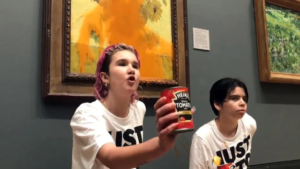We Were Not Just Wrong. We Were Hysterically Wrong.
Part I: The Complaint

Think back to the early months of 2020. Do you remember what was happening? Do you remember what we were thinking back then? Do you remember what we were doing? When I think about those months, I can’t find a fairer word to describe our behavior than hysteria.*
Think back. Remember the early predictions of a 10% mortality rate? Do you remember how we worried about how long the virus could linger on everything from apple skins to paper bags to plastic handles?
Do you remember how we shut down our beaches because we believed that the virus could spread itself in the sea breeze? There were even discussions about whether it could survive in the ocean!
Do you remember that hospitals would not allow family members to be with their loved ones, even during their final hours of life?
Looking back on all that now, it seems certifiably crazy. But it wasn’t just a brief, initial overreaction. Have you thought about all the things that we were thinking and doing in the second half of that year and in the following 18 months? Are you aware of how many things we believed (and were told to believe by the CDC and government health officials) that turned out to be dead wrong?
We want to believe that what we did was sensible. That we always “followed the science.” We want to believe that we began with an abundance of caution (better-safe-than-sorry), and then scaled back the regulations and restrictions as we learned more.
But that’s not what happened. In retrospect, it’s becoming increasingly obvious that we took part in a massively destructive and very much unscientific government-sponsored exercise in fearmongering, gaslighting, witch hunting, and mass manipulation.
And it cost us dearly. In human and financial capital. A cost that cannot be recouped.
Early in 2020, when I was writing about COVID regularly, it was obvious that some of what we were being told made no sense. On top of that list was the mortality rate. It was said to be as high as 30% before falling to 10%, where it was widely publicized, resulting in a tidal wave of fear that spread through the developed world. Today, we know that the mortality rate was much, much lower. More importantly, we know that this should have been obvious to anyone that had the slightest knowledge of logic, as I argued in those early blogs.
That initial level of fear has abated. For most of us, it’s almost entirely gone. We all know dozens of people that have contracted COVID and recovered fully.
We now have more than 30 months of experience with the virus and with our reactions to it. And we have data from hundreds of national and international studies and dozens of mega-studies. What they are telling us is that many, if not most, of the important “facts” we were told about COVID by WHO, the CDC, and the media were downright false. And many of those falsities were being promoted by health professionals that knew, or should have known, better.
The US lost tens of thousands of profitable businesses, trillions of dollars in revenue, and two years of critical schooling for our youngsters. This is a big deal. And the media should be writing about it. What they are doing instead is gradually letting out bits and pieces of truth, hoping that the public will not realize they were bamboozled.
They want to bury the “facts” they were reporting. Or, if that can’t be done, they want to be seen as blameless. And if that can’t be done, they want to be forgiven.
Last month, The Atlantic published an essay by Emily Oster in which she acknowledges that a good deal of what the media reported was false and/or misleading. But she argues that it was done with good intentions. There’s no point in pointing fingers now, she says. We should give the media (and others involved) a sort of pandemic amnesty. “Let’s focus on the future,” she writes. “And fix the problems we still need to solve.”
Another tactic from the media that I’ve been seeing lately also admits to promoting the falsehoods, but makes light of them, as if the lockdowns and the mandates were all in good fun.
For example, this editorial from The Washington Post.
 MarkFord
MarkFord


